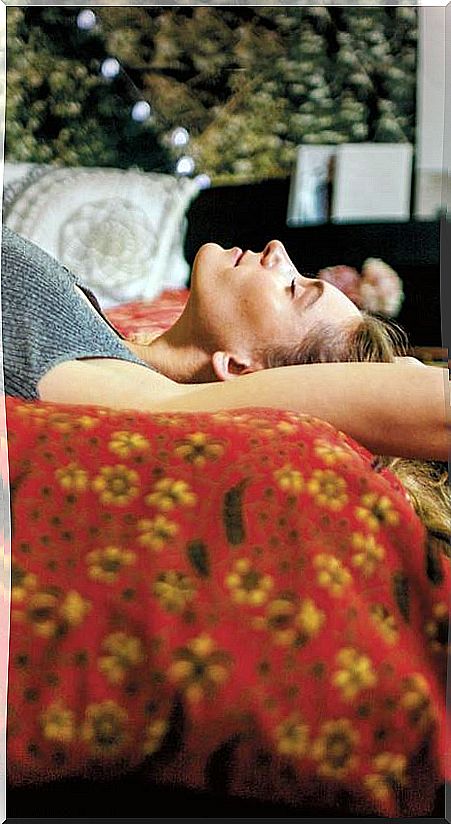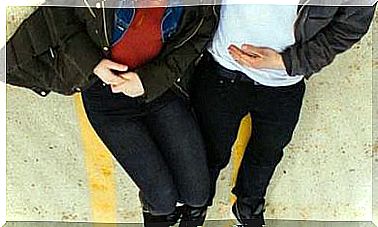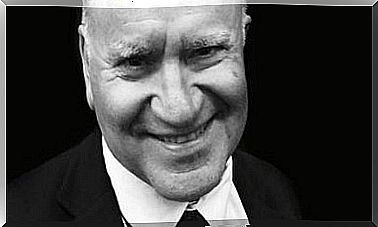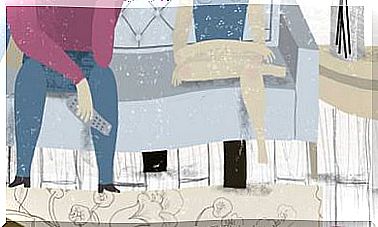Krugman’s 4 Exercises To End Insomnia
With a few simple rhythmic breathing movements you can deactivate mental stimulation and promote relaxation. One, two, three … and to sleep.

Modern life has brought us many benefits, but also new discomforts.
One of the most important is insomnia in its two manifestations: inability to fall asleep or wake up in the middle of the night when we should be asleep. Instead, we are faced with an avalanche of thoughts that do not stop and that lead us to uneasiness.
If we stop this uncontrolled mental agitation we will go into sleep, but how to achieve it?
Exercises for fast sleep
An alternative is the Sounder Sleep System, based on micromotion and organic mechanisms that facilitate sleep. Michael Krugman, its creator, was inspired during an excursion in Mexico by seeing a yogi on a rock in a very difficult pose performing subtle movements with his fingers.
They were like those in algae: almost imperceptible, as if he were navigating through his state of mind. And he recalled that in a seminar he had done, in which students slowly and subtly opened and closed their hands, the movement had soporific effects.
Michael Krugman practices the Feldenkrais method and, by experimenting with these movements, he shaped this somatic sleep training, which takes elements from medicine and the arts. There are currently about two hundred licensed instructors in a dozen countries.
The method, with principles common to both traditional and modern self-healing systems, is based on the functioning of sleep, governed by two fundamental and opposite principles of nerve cells: stimulation and inhibition.
The stimulation is behind our actions, physical or mental. It allows us to initiate, guide and sustain them. But it cannot do its job without a limiting regulatory principle: inhibition.
The inhibition modifies the speed, intensity, amplitude, size and duration of our actions to better fit our intentions.
Working in a coordinated way, stimulation and inhibition give shape, coherence and orientation to our actions. We need stimulation to do things and inhibition to do them well.
Less stimulation, more inhibition
The balance between stimulation and inhibition in the brain changes radically when we fall asleep and favors the latter.
As a result, brain processes slow down to a tiny fraction and billions of neurons are “in sync”; that is, they all do the same thing at the same time, smoothly and slowly: cognitive activity slows, metabolic activity slows, and the entire body quiets down.
This is the natural process for falling asleep. micromotion and respiration
The breath is the bridge between the conscious and the unconscious. Adding a movement or stimulus to one of the moments of the breath (inspiration, expiration and pause), without manipulating it, we approach the unconscious processes and sleep.
The right movements to fall asleep
But what kind of movement helps the most?
All physical movement produces a mixture of stimulating and inhibitory activities in the brain.
Large, fast and strong movements produce a lot of stimulation and proportionally less inhibition, which tips the balance in the brain towards stimulation.
In contrast, small, gentle and gentle movements produce abundant inhibition, and proportionally less pressure, which reduces stimulation in the brain and enhances inhibition.
Gentle movements transport us to a state of absorption. As it happens when we do a very interesting reading, we watch a moving movie, we listen to music that moves us, we work on something we like, or we meditate.
Therefore, the stimulus, the movement associated with breathing, must be of low intensity. We must eliminate syncopated, strong, complex and unpredictable movements. And empower the predictable, chained, lazy and simple.
It should be like a lullaby: a smooth movement, as small as possible, fluid, easy to perform, predictable and adapted to the breath. We call it “micromovement”.
The Krugman system against insomnia
Krugman’s system proposes to alleviate insomnia by performing micromotion both throughout the day and before going to sleep or if one wakes up in the middle of the night.
During the day, micro movements regulate stress and allow us to be in contact with the inhibitory movements of the brain. This is a necessary preliminary step to be able to fall asleep later or at night.
If during the day we do not stop being in the stimulation process at any time, when we ask the body at night to descend directly to sleep it will be impossible for us.
At night, the micro movements carried out in bed before going to sleep, or in the middle of the night when we have woken up, will first lead us to relaxation and, with their inhibitory effect, to sleep. no rush to sleep
We must take into account a component of sleep that can reduce the effect of the exercises: the attitude towards it and ourselves.
The dream comes when we are alone and requires a clear internal dialogue, without haste. Therefore, the first premise to sleep well is not to rush for the time it takes to fall asleep.
The second is not to sabotage yourself: you have to want to sleep, but not as an imposition, not as if it were a job.
Sleep comes when we trust the elements that make it possible, our weight and breathing. For this, relaxation is necessary first, and this depends on the weight and the exhalation, it consists in letting go, in letting go towards the earth.
We breathe about 15 times a minute, a total of about 21,600 times a day, and not even half are conscious. The body, brain and nervous system know how it works and that is why we continue to breathe in any situation.
They deserve a vote of confidence. If we do, the dream will come. She will cradle us in her bosom with the full confidence that everything will be all right.
To promote sleep, introduce micro movements in several phases:
- Observation. Scan your body, how it weighs on the floor or bed, and then the respiratory movement.
- Activation. Choose a micromotion (you have examples on the right page) and insert it into a part of the body when you breathe in.
- Relaxation. Pause and, as you breathe out, loosen the micromotion, your weight, and your thoughts.
- Confidence. Once the breath is released, let the inspiration come naturally – trust that it will. Take advantage of the pause to see what changes have occurred.
- Break. After 8 minutes of practicing with the chosen micromotion, rest and take time to breathe in and out, without doing anything.
- Repetition. After five minutes of rest, resume the micromovement coupled with the breath, but this time do it with half the intensity of the previous time.
Say goodbye to the day
Before falling asleep, you can do this exercise to clean your interior and download it from the information that has been recorded in your memory and that you do not need to sleep. Visualize what comes to mind by following these steps:
- With a smile, evoke everything you learned, what enlightened you, what gave you support and projected you forward.
- Acknowledge what caused you pain or pain, and then politely dismiss it.
- Be grateful for the moments and the people who helped you carry the day forward.
With this cleaning, the senses are free and ready to perceive. Sleep, although it is an activity developed by and for the brain, is not an intellectual activity, but a sensory one.
4 very effective mini-exercises for sleeping
End the day with these exercises and enjoy a good night’s sleep.
-
Over the thighs
Sitting, with the palms of the hands on the thighs, exert a micro pressure when inhaling and release when exhaling.
Wait for the air to come naturally and repeat for a few minutes.
- Fingers and palms
Sitting with your hands in your lap on a cushion that rests on your thighs, place the pad of the thumb of your right hand over the center of the palm of your left hand.
It exerts a micro pressure when you breathe in and releases when you breathe out.
- In the abdomen
Lying on your back, place the palms of your hands on your abdomen.
As you breathe in, raise your thumb slightly. As you breathe out, let it rest on your abdomen.
Repeat on the arch formed by the ribs at the level of the stomach and in the upper part of the chest.
- Mandible
Sitting or lying down, with the mouth closed, when inhaling, bring the jaw upwards, towards the top of the head: the lower teeth approach the upper teeth, the lips are slightly compressed.
As you breathe out, relax your jaw without your lips parting. Wait for inspiration to come naturally and go back to micromovement. Perform about ten times and rest.
Then continue with the same movement, but approaching the jaw half of what you did before. Do about ten repetitions and rest. The dream will come to you.









